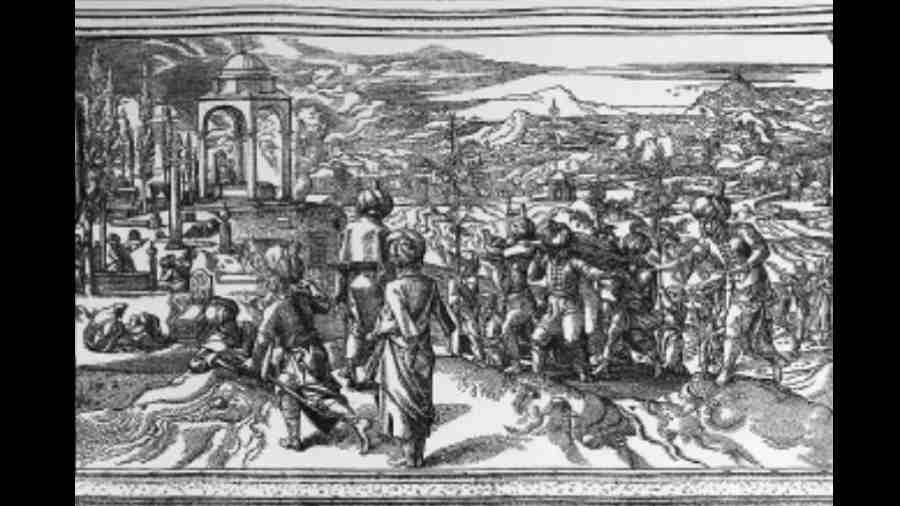Book: Nights Of Plague: A Novel
Author: Orhan Pamuk
Publisher: Hamish Hamilton
Price: ₹799
When Orhan Pamuk began writing Nights of Plague in 2016, he could scarcely have anticipated that a global pandemic would render his fictional themes uncannily prescient by the time of the book’s publication. The novel set in 1901 during an outbreak of bubonic plague on an imaginary Mediterranean island called Mingheria, the twenty-ninth province of a rapidly disintegrating Ottoman empire. Its plot is driven by the quarantine measures adopted by the Sultan’s representatives to contain the spread of disease. The local population, divided equally into Muslims and Greek Orthodox Christians, react to these measures with resistance, suspicion and hostility. The Ottoman Empire’s Chief Inspector of Public Health and Sanitation, a Polish Christian born in Istanbul called Stanislaw Bonkowski, and his assistant, a Greek physician, are mysteriously murdered soon after their arrival in Mingheria. The task of enforcing quarantine on the island and coping with the rapid spread of the epidemic then falls to Prince Consort Dr Nuri Effendi, the newly-wedded husband of Sultan Abdul Hamid’s niece, Princess Pakize (daughter of his deposed elder brother, Murad V, whom the neurotic, crime-fiction-reading Sultan has imprisoned).
“The politics of global quarantine operations,” as Pamuk puts it, thus sit at the heart of this massive, nearly 700-page feat of historical imagining. But despite this fact, Nights of Plague is not really a plague novel, a form that has exercised a morbid hold on the European imagination and is notably exemplified by Daniel Defoe’s Journal of the Plague Year, Mary Shelley’s The Last Man, Alessandro Manzoni’s The Betrothed, and Albert Camus’s The Plague (Thomas Mann’s Death in Venice features cholera and Boccaccio’s Decameron, beginning with the flight of ten young people from plague-stricken Florence in 1348, is not about the epidemic). Rather, Pamuk chooses to embellish a critical moment of Ottoman history by inserting the charming, sensitive Princess Pakize (whose letters to her sister, Hatice Sultan, form the ostensible basis of the narrator’s historical reconstruction) into the royal family, and the imaginary island of Mingheria, “pearl of the Eastern Mediterranean Sea,” into regional geography and contemporary politics.
Hatice Sultan, eldest daughter of Murad V, was of course an actual historical figure (her affair with her cousin’s husband caused an international scandal when it was discovered in 1904). But Pamuk’s invention of Pakize and her professionally qualified spouse, together with the romantic beauty of Mingheria, and the city of Arkaz, with its “enigmatic” pink-stone castle built by the Crusaders, and the three domes that signal its Venetian, Byzantine and Ottoman past, indicate a historical dimension beyond pandemic politics. Mingheria’s brief flirtation with independent nationhood through a bid for liberty led by its (former) governor, Sami Pasha, allows Pamuk to explore the complexities of early twentieth-century state formation, linguistic nationalism, imperial decline, and the rivalry of colonial powers like France and England. As Pamuk states, “the first quarter of the 1900s was, comparatively speaking, a particularly brutal time in human history… [as] a result of the simultaneous discovery and rapid spread of automatic machine guns and of patriotic nationalism.” It was a period, moreover, of many failed states and rogue republics, notably the Free State of Fiume (today Rijeka, Croatia), an independent ‘country’ existing between 1920 and 1924, with a territory of only 28 square kilometres, connected by a corridor to the Kingdom of Italy (for which the poet, Gabriele D’Annunzio, attempted to annex it in 1919).
Quarantine politics — the European belief that plague and cholera were spread by Muslims making the Haj pilgrimage, and the suspicion of both Mingherian Christians and Muslims that the other community had deliberately introduced the plague to the island to kill off their rivals — lie behind the stirring events of 1901 as Pamuk recounts them. But in the end the novel is more about Mingheria itself, an imagined land as full of mystery as of promise and enchantment, and reminiscent of the Istanbul of Pamuk’s youth. The trajectory of Mingheria’s brief period of freedom, undermined by the fanatical surveillance mounted by its Department of Scrutinia and followed by its surrender to repressive rule, offers distinct echoes of Turkish history, including the Armenian genocide. It is Mingheria’s Chief Scrutineer, Mazhar Effendi, who emerges as history’s victor, though as readers our attention remains focused on the fortunes of Princess Pakize and her husband Nuri Bey as the six-hundred-year-old Ottoman empire comes to an end with the close of the First World War. The Ottoman caliphate is abolished soon after, and the royal family is banished from the country. Contagion and containment thus offer Pamuk a brilliant, historically inventive means for reflecting on global history and imperial decline. Whether our own pandemic experience will offer similar lessons is anybody’s guess.










